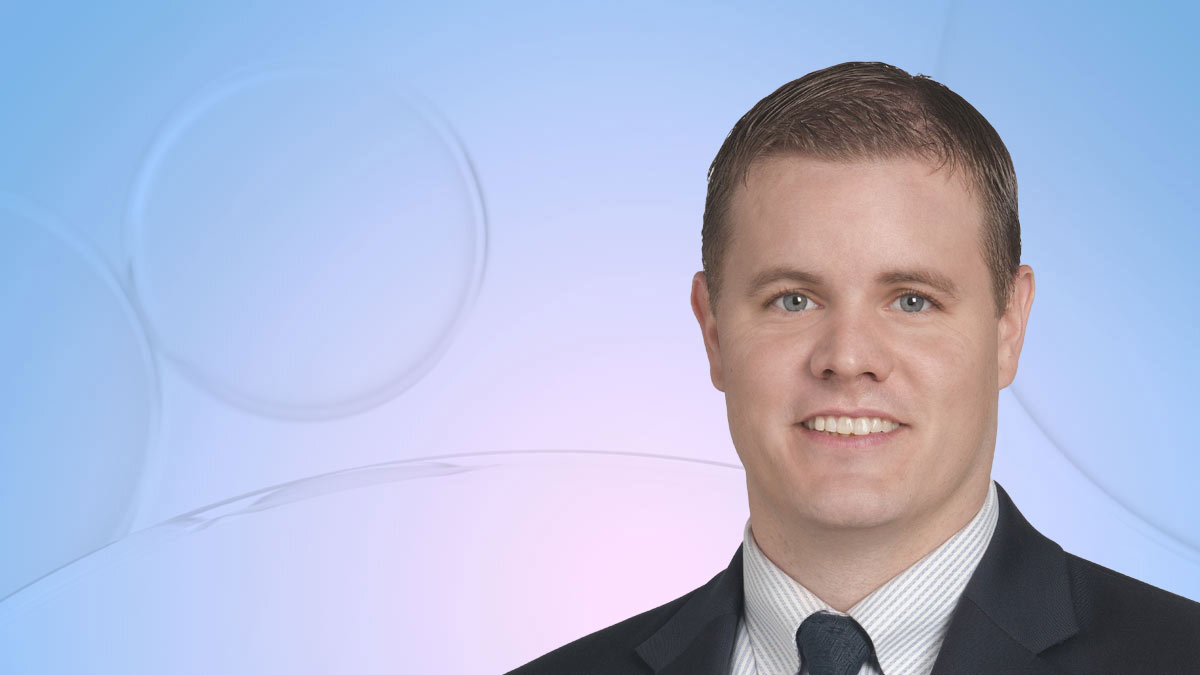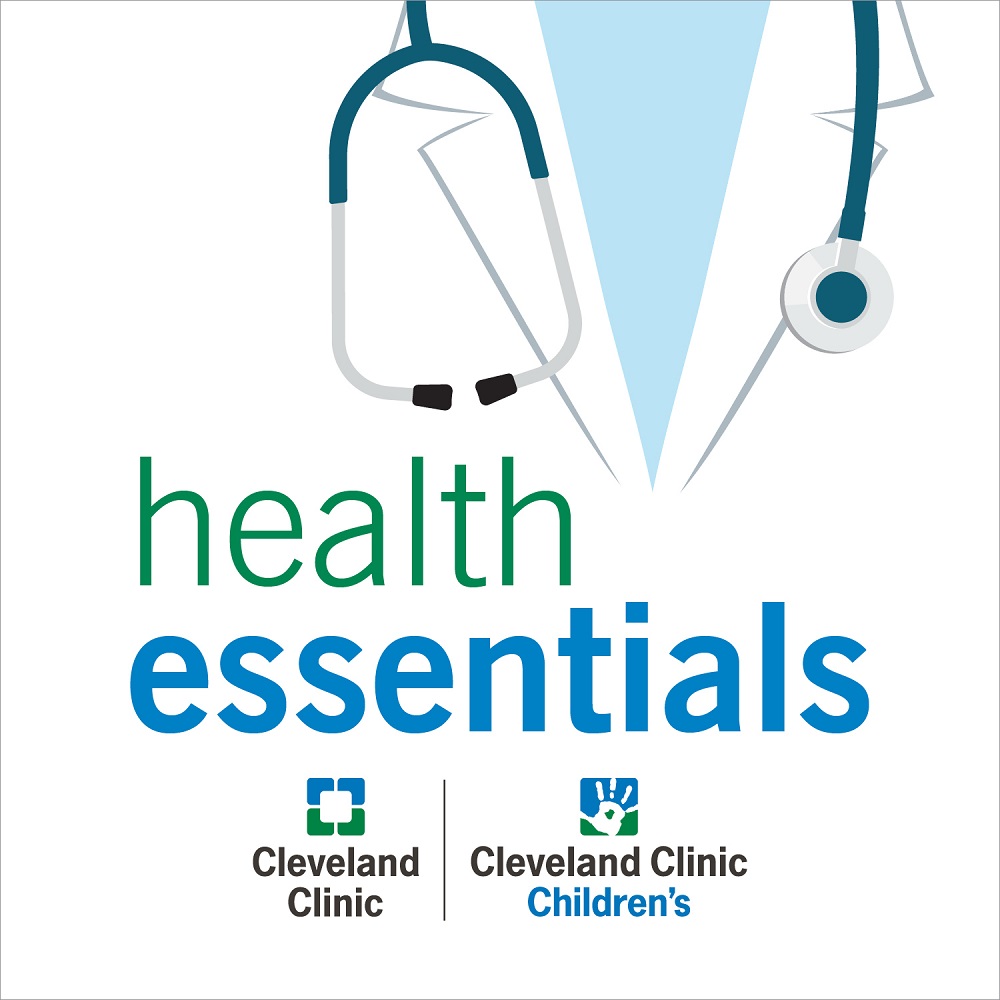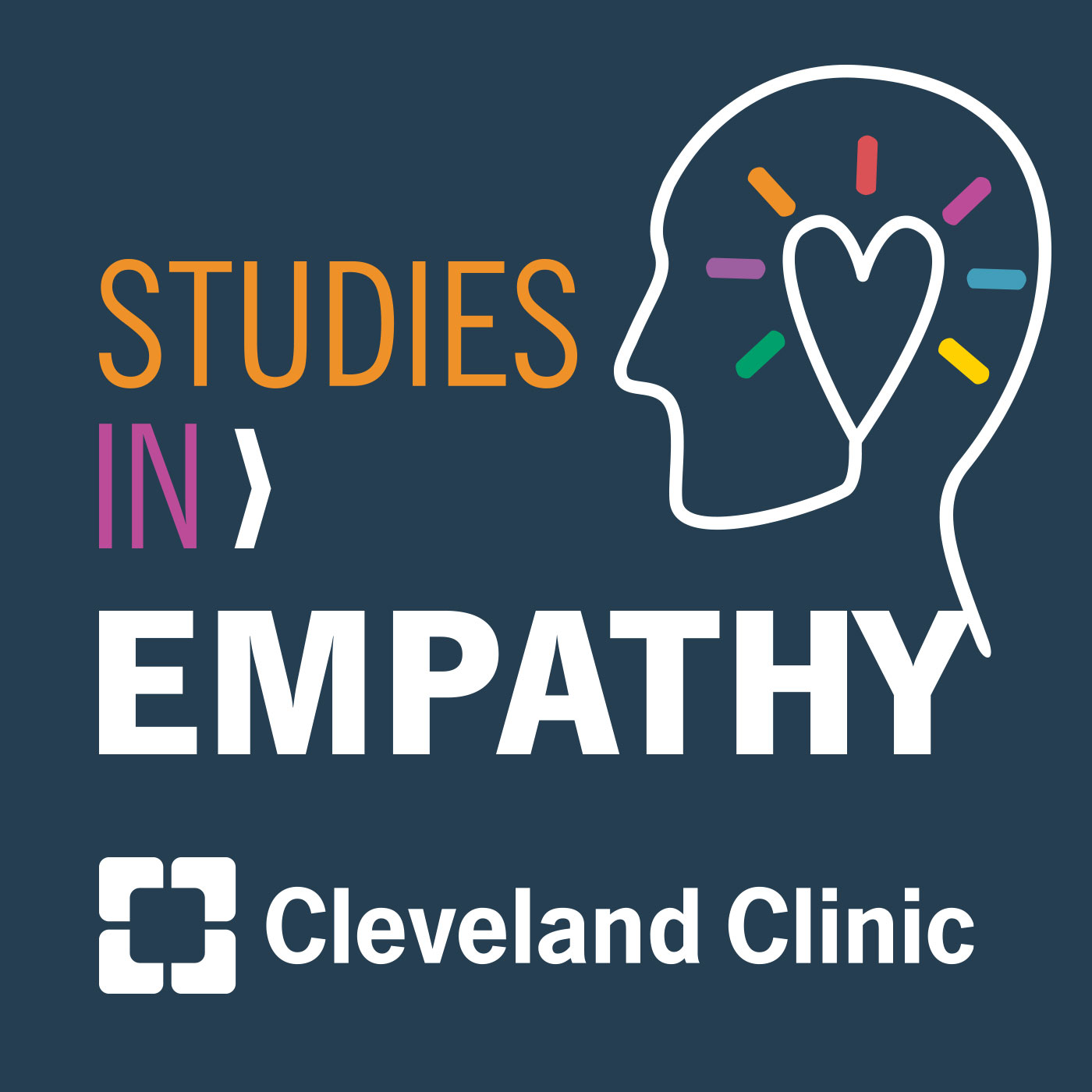Training Programs Help Military Personnel Skill Up (Part 2)

In this episode, we talk with Andrew Guenther, Director of Military Education, and Naval Chief Petty Officer Joe Stanco, a preceptor with the Cleveland Clinic's Independent Duty Corpsman training program. The program allows Independent Duty Corpsman to build their field care skills through rotations in such areas as the emergency department and medical and surgical intensive care units. This is part two of a two-part series.
Subscribe: Apple Podcasts | Podcast Addict | Spotify | Buzzsprout
Training Programs Help Military Personnel Skill Up (Part 2)
Podcast Transcript
Dr. James K. Stoller:
Hello, and welcome to Med Ed Thread, a Cleveland Clinic Education Institute podcast that explores the latest innovations in medical education and amplifies the tremendous work of our educators across the enterprise.
Dr. Tony Tizzano:
Hello. Welcome to today's episode of Med Ed Thread. I'm your host, Dr. Tony Tizzano, Director of Student and Learner Health here at Cleveland Clinic in Cleveland, Ohio. Today's podcast is part two in a series exploring Cleveland Clinic's efforts to optimize career opportunities for our military personnel when returning to civilian life. In this segment, we'll take an in-depth look at the clinic's program to enhance training of the Navy's Independent Duty Corpsmen.
Today, I am very pleased to have Andrew Guenther, Director of Military Education within our Education Institute, and Naval Chief Petty Officer, Joe Stanco, a preceptor in the clinic's Independent Duty Corpsmen program, here to join us. Andrew and Joe, welcome to the podcast.
Andrew Guenther:
Thank you.
Joe Stanco:
Thanks for having us.
Dr. Tony Tizzano:
Before we get started, I'd like to thank you both for the service that you've provided for our country. I know I speak not only for myself but on behalf of the clinic, who is enormously proud of our military, and I think that is our history, and it continues to this day, and we're all very proud.
So, for both of you, to get started, please give us a little bit of information about yourself, your educational backgrounds, military experiences, and what brought you to Cleveland and your roles here at Cleveland Clinic. We'll start with you, Joe.
Joe Stanco:
Hi, thanks for having me. My name's Joe Stanco. I'm a Chief Petty Officer in the Navy. I've been in the Navy for 21 years. I'm a hospital corpsman, Independent Duty Corpsman. I serve independently underneath a supervisory program doing medicine, taking care of sailors, and doing my best to make sure they get what they need.
I've served on several platforms. I was an aviation water survival instructor. I worked with the Seal team in Naval Central Warfare, taking care of their medevacs and medical readiness and their day-to-day care.
Dr. Tony Tizzano:
So, a depth of experience, for sure. Andrew, what about you?
Andrew Guenther:
Not as much. I was an intel guy with the Marine Corps and- and joined Cleveland Clinic about 10 years ago. I started in talent acquisition, ran the Hero Experience, which is our veteran's hiring program here at Cleveland Clinic, and then more recently, joined the Education Institute in my current role as Director of Military Education.
Dr. Tony Tizzano:
Excellent. So, to get started Andrew, if you could help us frame the topic beginning with the Navy Bureau of Medicine and Surgery and the clinic's Independent Corpsmen training program.
Andrew Guenther:
Sure. So, way back when, when I took over the veteran hiring program, the Hero Experience, I went through the old Rolodex to kind of start building a little bit about, you know, hey, what should I do? What could we do? How does the Cleveland Clinic add value? So, I went back and- and asked a few people that I worked with that were at the Pentagon, "What should we be doing? How can we help? How do we add value?"
One of the things on the laundry list of items that came back was prolonged field care for our medical staff. So, that was something that really jumped out on me. Obviously, being in healthcare, caring for patients a- as the primary mission, that's something that stuck to me. So, I worked with the leadership here at Cleveland Clinic and with the Navy at the Bureau of Medicine and Surgery, the Force Master Chief and the Surgeon General, and we were able to build this Independent Duty Corpsmen training program.
And the team that we have, internally, here for this is great. So, Deb Kangisser and Dr. Roy Sites are my counterparts at that program and do a wonderful job supporting and dealing with me, most importantly, as Joe can tell you.
He's been here for just a couple weeks and has had to deal with me already. So, everybody thanks you for that. So, Joe, tell us more. As a preceptor, what are your objectives within this program?
Joe Stanco:
Absolutely. So, our goal in this program is to take Independent Duty Corpsmen that might not have the experience, or that have been on the shelf for a little bit and not doing, maybe, such traumatic type of medicine and- and getting ready for prolonged field care, and we take select sailors through the program, and they're basically sharpening their skills. They're going through several specialty clinics, working in the ERs, the SICUs and MICUs, and, uh, working with the healthcare provider team here to sharpen their skills.
And as a preceptor, I'm the senior person out of a group of three. I make sure that our sailors are putting their best foot forward, making sure they are representing the Navy well, while also optimizing their learning interaction while here at the Cleveland Clinic, and I couldn't say we- we would have a better team anywhere else with Deb, Andrew, and Dr. Sites. Uh, just trust a tremendous team and they've been great to us. So, being a preceptor, you know, while seems challenging, is- is quite easy with that team.
Dr. Tony Tizzano:
Boy, that's good to hear, and I- I know both of them and- and I've worked with Deb quite a bit, and she is fabulous. So, when you look at the gambit of what you've seen here, what are some of the highlights, some of the things that you've really stand out as these were incredible experiences and may not have gotten them another way?
Joe Stanco:
The team here puts us in places where we can succeed and learn without much pressure on us. So, you know, sometimes in medicine, there can be egos, and being here at the Cleveland Clinic, something that I learned about your staff is that they're tremendous and they want to see you learn. So, they never put you in a bad spot, and they just come out of the woodwork wanting to teach you things that you might not know, and then they make it such a welcoming environment so that you feel like you're set up for success around every corner.
So, we do cadaver labs, and the best part about the cadaver labs here at Cleveland Clinic is the ratios. You know, in the Navy, we might not have the ratios that you would have here, and we're getting hands-on one-on-one time with a provider, learning how to do procedures on cadavers before we do them on the first person maybe we've ever touched.
So, and then right after that, we're set up, because we go to the ER. After our cadaver lab, and there was a patient having a code, and I was able to get intraosseous access because I just did it on a cadaver, and I had someone over my shoulder the whole time, and they just set you up for success to build that confidence, so that the first time you do it in the field, it's not the first time you've ever done it. And it- it's just great.
Dr. Tony Tizzano:
Well, when you first mentioned this to me, it was the first time I ever heard of it. So, tell us and our audience a little bit more about this. So, you have someone where you're not about to get intravenous access. And so, do you do what?
Joe Stanco:
Absolutely. So, you have someone that you might not be able to get intravenous access, due to whether it's shock, blood loss, or traumatic injury, and what you do is you go into a large bone, you know, the humerus, the tibia. The Navy usually, in the military, for a long time, they were teaching substernal. So, you could do it in the sternum, and medicine has moved to different areas, and now you can do this in- in the humeral head and- and in the tibia, and a couple other places.
And I hadn't had the opportunity to do that yet in my training, and I did it here for the first time, and then I was able to do it on a cadaver, and then I was able to do it on a live patient going through a code, and we were successful.
Dr. Tony Tizzano:
Well, and I could see the application for that in the military in the field, where who knows when you get to someone, and they've had a lot of blood loss. It is very difficult to find a vessel, and so you have another option. How about the Sim Center? You know, we have a very active simulation center here at the Cleveland Clinic. Have you had an opportunity to interface with them at all?
Joe Stanco:
We have. They were great. We were lucky enough to have Andrew as one of our actors, and we did a traumatic brain injury lab where we were doing exams and patient histories and Andrew was a pretty good patient and I don't know if he was acting or not, but he was forgetting a lot of stuff.
Andrew Guenther:
I was definitely the after on that one not the before.
Joe Stanco:
So, we had a doctor come into town and give us hands-on, key clinical pearls to assist us through our exam, and it was the most in-depth TBI exam that I've ever gone through, and had the pleasure to learn, and with the live actors, the scenario rooms being set up, and having the subject matter experts right there with us as we were going through that, it was definitely some of the best training I've received in that avenue.
Dr. Tony Tizzano:
Excellent. You also mentioned shock training, and I think we all think of military medicine and you're having to deal with shock all the time. How is that parlayed to you?
Joe Stanco:
So, we were actually spent some time in the SICU, and we were going through seeing some patients that were having a hard time after surgery, and as we were going through, we were going through rounds with the providers, and one of the providers took a notice to us and asked us some questions and asked what we did.
And when that provider found out that we were in the military and weren't med school students doing rounds and just observing, she took a great amount of time to pull us to the side and take extra time and care to give us specific training on our scenarios, on how we can relate the patients that we're looking at in front of us to patients that we could see in the field. And it was more relatable than anything I've ever done before.
Dr. Tony Tizzano:
Andrew, would you like to add to that?
Andrew Guenther:
Yeah, I would. Thanks. You know, earlier, I mentioned our small team too, but one of the things that makes this unique here is that we have so many clinicians that step up and volunteer to do this for us. So, there was one great example right there. Also, with the TBI training and the cadaver training. So, it really does take a village, right? So, and that's something here that we live and breathe at Cleveland Clinic.
So, I also do want to throw out a thank you. I thanked a couple of people before. I want to make sure that I'm including that thank you to everybody that's involved and steps up and helps us with this, because they certainly don't have to.
Dr. Tony Tizzano:
Yeah. Well, education is one of the pillars of the Cleveland Clinic. We have so many students, I think, within a year, we have about 11,000 plus students who come through our doors, and, you know, we hope to be able to give them the best possible experience. So, to personalize this a bit more, Joe, you had mentioned to me an episode that you had regarding shock with a scorpion sting.
Joe Stanco:
Yeah, absolutely. You know, in 2014, I was serving overseas, and I was an independent provider, and I had a local village elder, uh, rush a small child, maybe five, six years old, over to our camp, and the child wasn't doing well. I couldn't tell what it was. Obviously, the patient was in shock. We don't get much training with pediatrics, and I was able to do an assessment and realize that this patient was in shock, and I couldn't tell if it was anaphylaxis or what it was and had to wait for the interpreter.
So, we were able to stabilize the patient and then once realizing the shock was due to a scorpion sting, and it was anaphylaxis, I was able to treat that patient, and in the heat of the moment, you don't recall certain things, and you kind of maybe even freeze up a little bit, but I worked with a great team that helped me get through it. And I was able to related that to the provider that gave us a class, and she was able to take that lesson that I described to her and go in depth into the science and to how it relates to the patients that are laying on the beds in the SICU to us, and really drive that point home.
So, my lesson I learned overseas, I was able to relate to that doctor, and that doctor in the SICU that took the time to give us a class was able to push that knowledge on to the two other junior IDCs I had with me. So, hopefully they're able to learn those lessons before someone just drops a kid off on their table overseas.
Dr. Tony Tizzano:
Fabulous. So, beyond the training that you get here, when you're out in the field, is there a way that you might have an opportunity to come back and touch base? Can you connect with the network of individuals here? Is that a possibility?
Joe Stanco:
Going through the process here at Cleveland Clinic, every provider has been more than great at making contact and wanting to do training. But one of the things that's been great is they always push their contact information, and they literally tell you, "No matter where I- you are in the world, if you reach out to me, I'll get back to you."
So, one of those things is building the relationships that I've built here at the Cleveland Clinic over my month-long training has been maybe one of the greatest things I've experienced, separate from the medicine. You know, coming to the Cleveland Clinic and seeing how your organization works, I've learned almost as much in leadership as I've learned in medicine while I've been here. You know that leadership team and- and that concept of how you care for people in your organization is something that will bleed over to my experiences, no matter where I go.
Dr. Tony Tizzano:
Yeah, I think one of the strong suits of the clinic is it's a physician-led organization. And so, you live with the decisions you make, and the entire healthcare team, there is leadership that virtually every level in this organization, and there's many, many ways to develop leadership. And I think, by mere proximity, it can't help but rub off.
So, Andrew, when we look at this program and we compare it to things that are done in other places, is this a stand-alone or is something like what has been done here done at many major medical centers across the country?
Andrew Guenther:
So, the IDC program is unique. You know, the month-long residency, the time, the ratio that Joe mentioned earlier, you know, these are all things that just we are doing. Uh, a lot of other hospitals don't have the resources that we're able to have, and, you know, earlier I just mentioned all the people that come out and help us with this and the people that volunteered their time. Not every hospital has people that'll do that.
You know, so, for us, it really does take that team approach. So, no, it's very unique. There are corpsmen trauma training programs, and Joe, you might have to help me here. I know we've got one in Cleveland. There's Cook County. There's LA.
Joe Stanco:
Raleigh, North Carolina.
Andrew Guenther:
And Raleigh, North Carolina. Thank you. So, that's commonplace, I guess, I mean, great hospitals and great clinicians that are doing that, but for our IDCs, there is not another program that exists that is as long and as in-depth as ours.
Dr. Tony Tizzano:
And how many cohorts a year would you have?
Andrew Guenther:
Between three and four.
Dr. Tony Tizzano:
Between three and four. And does one ever come back and do it again?
Andrew Guenther:
No. We haven't had that happen yet, not that we're not game for it. Joe, looking at you. But that's kind of the design of the program. We want to make sure that we're reaching a broad audience of Independent Duty Corpsmen, so that they can bring those skills and knowledge to the fleet and/or fleet Marine.
Dr. Tony Tizzano:
And how many so far have- have been through this program?
Andrew Guenther:
About 24.
Dr. Tony Tizzano:
And it's been up for how long?
Andrew Guenther:
Since, what, 2019.
Dr. Tony Tizzano:
So, we're on our way. So, Joe, where and how is what you learned here at Cleveland put to task in the military?
Joe Stanco:
Yeah, absolutely. So, working as an IDC, you can be stationed on any Naval platform, whether it be, you know, in an expeditionary force with the Marine Corps teams. You know, corpsmen serve across all aspects of the Navy, whether on surface ships. So, within our cohort here, currently that's present right now, um, we have a sailor that's in Diego Garcia in the middle of the Indian Ocean, and we have a sailor that's been on an aircraft carrier and is getting ready to go to an independent platform on a small destroyer, and I was previously with the Naval Special Warfare, and now I'm at a health clinic in Charleston, uh, South Carolina, and I'm getting ready to go on a mission overseas to Laos to do personnel recovery. So, you know, anywhere the Navy team works in medicine, this is something that's gonna enhance our capabilities.
Dr. Tony Tizzano:
So, you mentioned that you have 21 years of service thus far in the Navy. What places have you been to and tell us a little bit about your personal journey and the kinds of work you've done in these various places.
Joe Stanco:
Absolutely. I went through IDC school in 2012 after being in the Navy for several years, and my first duty station as an Independent Duty Corpsman was Seal Team Five, and I got to work with some great individuals there, an amazing organization. And, you know, when you're working with a Seal team, everyone wants to think that you're doing really cool stuff, like shooting and moving and, you know, and that's not really our role.
And understanding our role in an organization like that is very important, you know, and we're responsible for their primary care, their day-to-day care, their deployment readiness, vaccines, you know, physicals, making medevac plans and echelon care plans when they go overseas to different patient movement avenues is- is really where you make your bread and butter, you know, in the off chance that you get trauma in one of those scenarios, it's very far and few between.
So, any experiences that we get here really amplifies people that are gonna go to those platforms. So, it's important, and then, after that, I was stationed at a Naval Academy prep school in Rhode Island, taking care of the students that go there that get ready to go to the Naval Academy, and then I went back to Naval Special Warfare where I was doing all medevac plans for our training sites on the west coast. So, I've been around a little bit.
Dr. Tony Tizzano:
So, within the training in the military, there is a lot of simulation done there, because some of these things, as you mentioned, you may not see them very often. So, how do you stay at the top of your game?
Joe Stanco:
Right. The Navy does a good job with, uh, making sure we go through refresher training. We go through some cadaver lab stuff, and then we do a lot of live training on actors, and cut suits, where actors are wearing suits that you can do procedures on, but it's not like seeing someone walking off the street in an ER and you're standing in a room by yourself ready to treat that patient. What you're doing here at the Cleveland Clinic is unique to that.
Dr. Tony Tizzano:
Yeah, I can see that as being an important piece of the whole overall puzzle. So, you had mentioned that perhaps you were on a ship or whatever, but someone had come up to you, and they just had a complaint out of the blue. They had noticed blood in their urine.
Joe Stanco:
I was overseas again and some of our Seal team guys don't like to admit when, you know, they get hurt, and we had a guy that- that came to me and was like, "Hey, doc, you know, I got an issue. Can you come to my room?" And I was like, "Okay," and not knowing what to expect, and he showed me several bottles of urine that were the color of red Kool-Aid, and I went, "Oop. Oh, this is pretty serious."
So, instead of the trauma stuff, I'm now working on primary care, disease, non-battle injury type issues, and those are 90 percent of our issues down range. And so, you know, being able to sharpen my skills here at the Cleveland Clinic, talking about internal medicine, shock, and the different specialties that you provide us opportunities to observe and practice in, will sharpen those skills. So, this way, when I see a patient like that again, I'm able to delineate exactly what's wrong with them.
Here at Cleveland Clinic, they've given us a lot of time on the ultrasound machines, and that's gonna pay dividends when I go back out to the fleet.
Dr. Tony Tizzano:
Excellent. So, as you see yourself transitioning from your military life into a civilian life, what do you see on the horizon?
Joe Stanco:
For me, personally, a hospital corpsman is something that's been bred into me. By the time I retire, I'll be 24 years, and I want to keep moving in the upward direction of medicine. And so, I personally, would like to go to PA school, and I think it's a natural progression. You know, the first PAs ever were made of hospital corpsmen returning back from Vietnam, and Duke University took them and, uh, put them through a training course, and they became the nation's first ever physician assistants.
So, as being a little bit of a history buff, of course I want to be a PA, and of course I want to apply to Duke and see how that goes. They might not feel the same way, but we'll see. Something that I can take from my experience here at the Cleveland Clinic, moving forward in my healthcare career after I retire, of course, are the networks I've made, you know, the connections I've made with people. The way I want to work within a team.
You know, in the military, you get bred to- to lead a certain way, and people are the focus, and- and sometimes, that doesn't bleed over to civilian organizations, but to see how you work as a team here within the Cleveland Clinic, I kind of put a- a higher bar on what I want to do after I get out of the military.
Dr. Tony Tizzano:
That's just fabulous. Well, you know, this is really intriguing, because we always hear about, well, you know, our military coming back, and they don't have the opportunities they had hoped for, and this is just one step in the right direction, I hope, towards doing that. So, I'm sure there are some things that I neglected to mention or things that you would like to bring to our audience. Are there any things that you would like to add?
Joe Stanco:
I just want to say thank you to all the staff members at the Cleveland Clinic. I mean, from the security guards to the nurses to the paramedics to the doctors to the specialists, they couldn't have been kinder to us, you know, the second they hear what we're doing and why we're here. There is not one thing they could not offer us, whether it's from tours, where to go on the weekends, to, "How can I help you?" and "Here's my contact number and don't hesitate to reach out." They were just the nicest group of people you could have ever imagined working with.
Dr. Tony Tizzano:
I'd expect no less. Well, thank you so much, Andrew and Joe. This has been a great podcast. To our listeners, thank you very much for joining, and we look forward to seeing you on our next podcast. Have a wonderful day.
Andrew Guenther:
Thank you.
Joe Stanco:
Thanks for having us.
Dr. James K. Stoller:
This concludes this episode of Med Ed Thread, a Cleveland Clinic Education Institute podcast. Be sure to subscribe to hear new episodes via iTunes, Google Play, SoundCloud, Stitcher, Spotify, or wherever you get your podcasts. Until next time, thanks for listening to Med Ed Thread, and please join us again soon.




